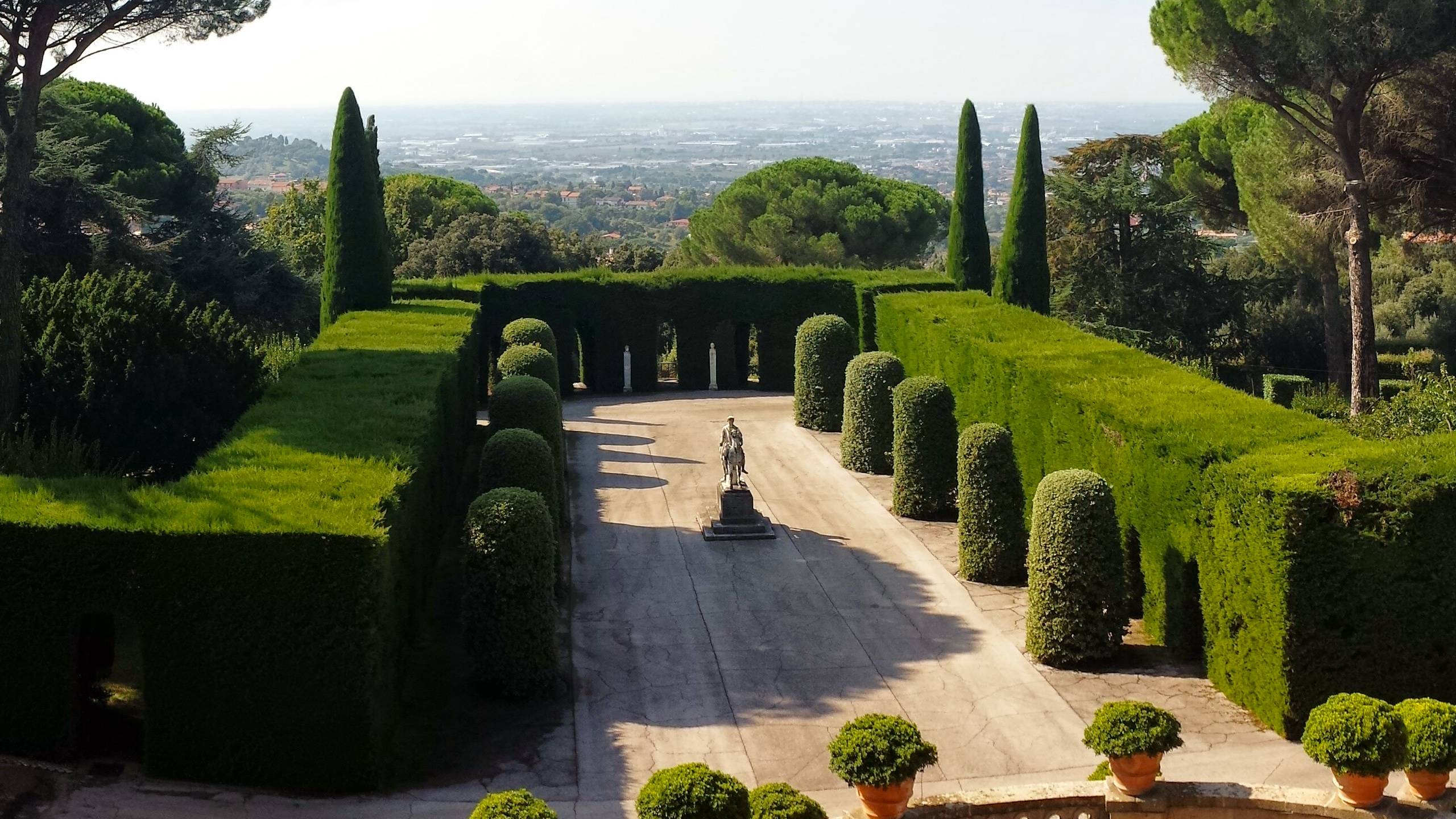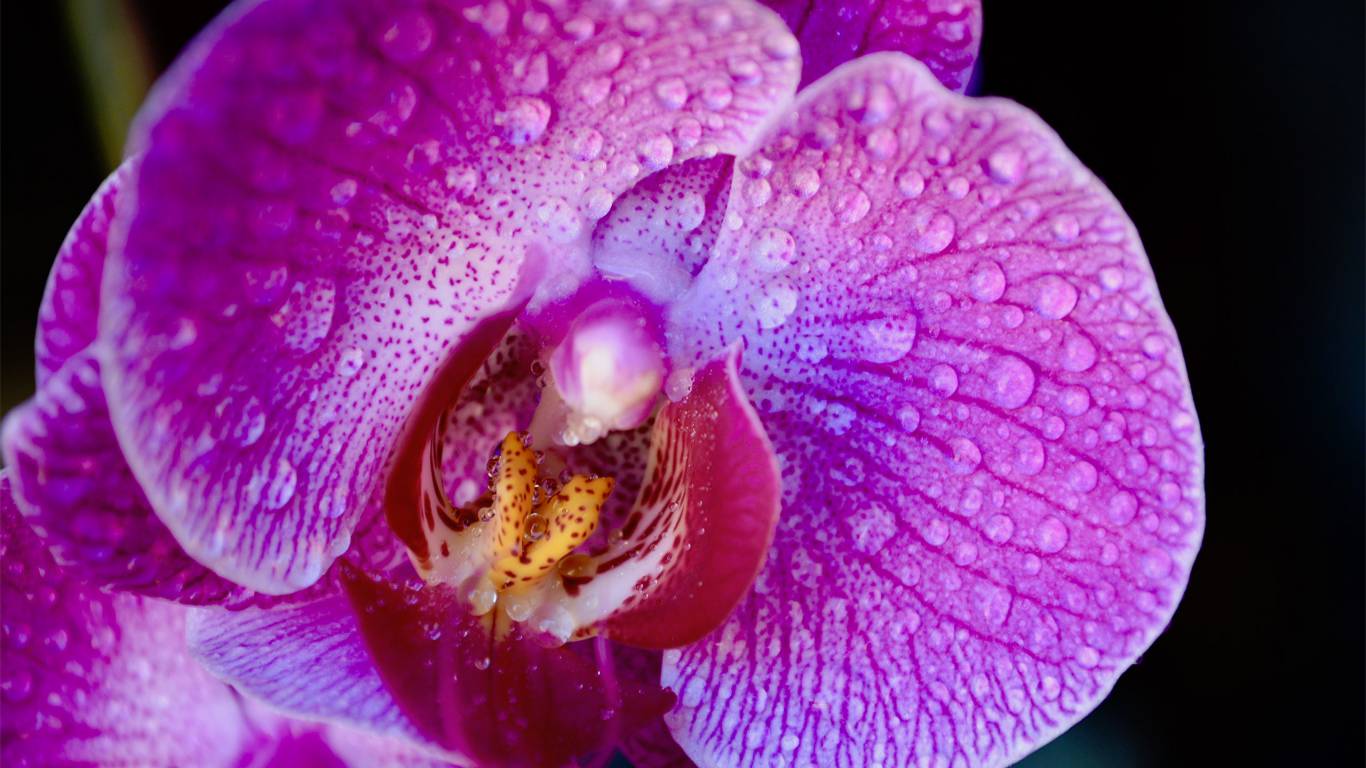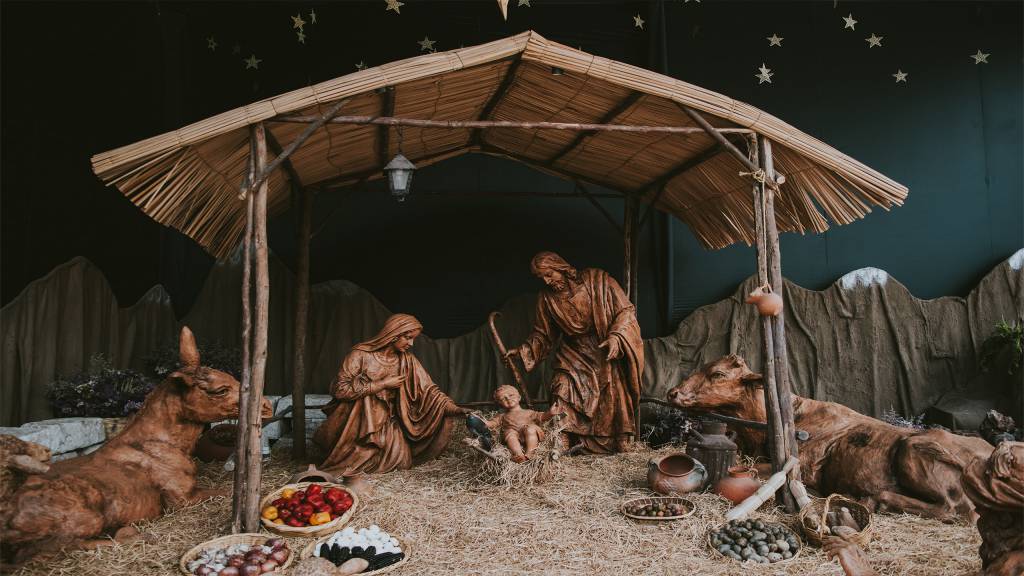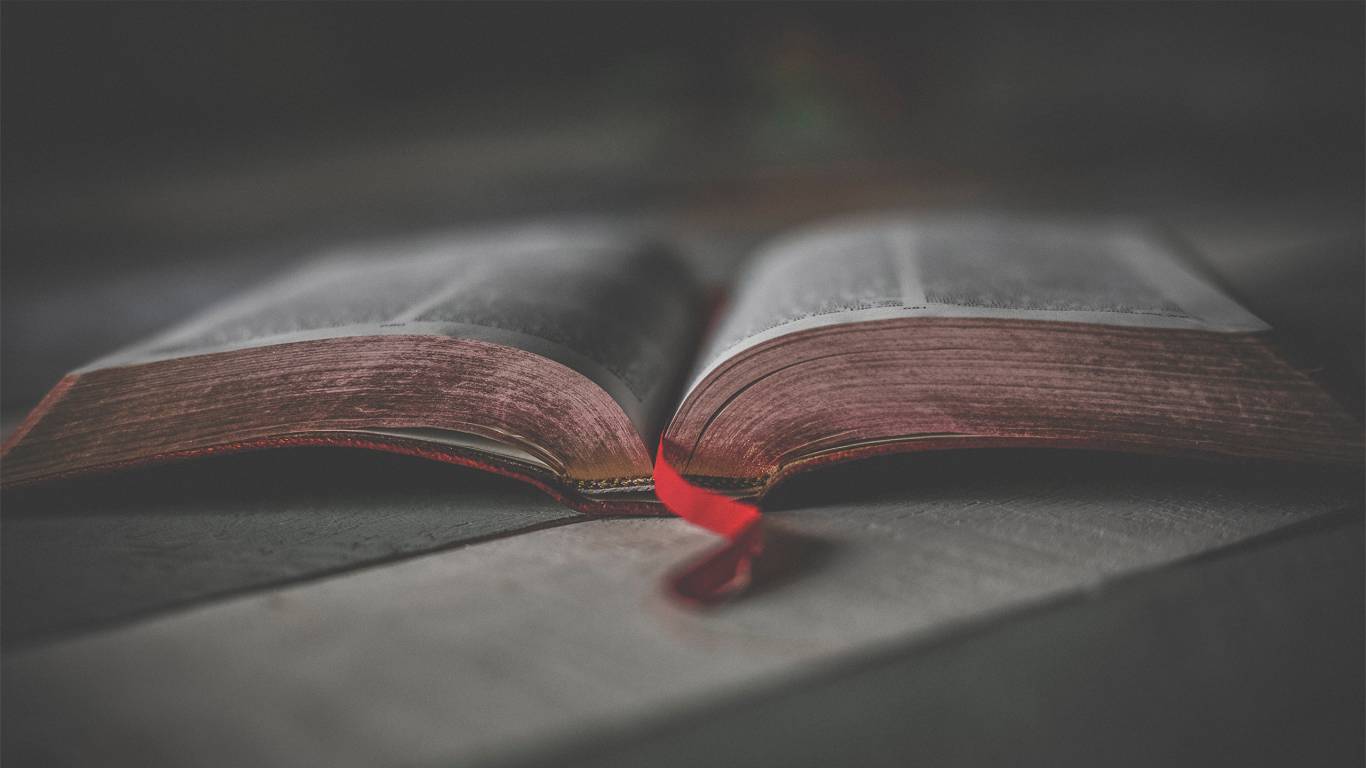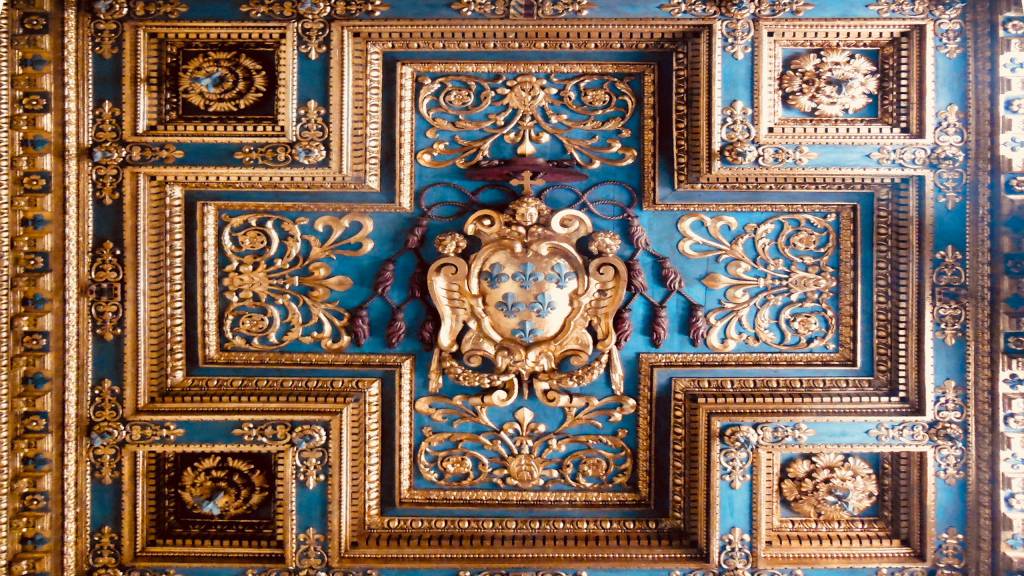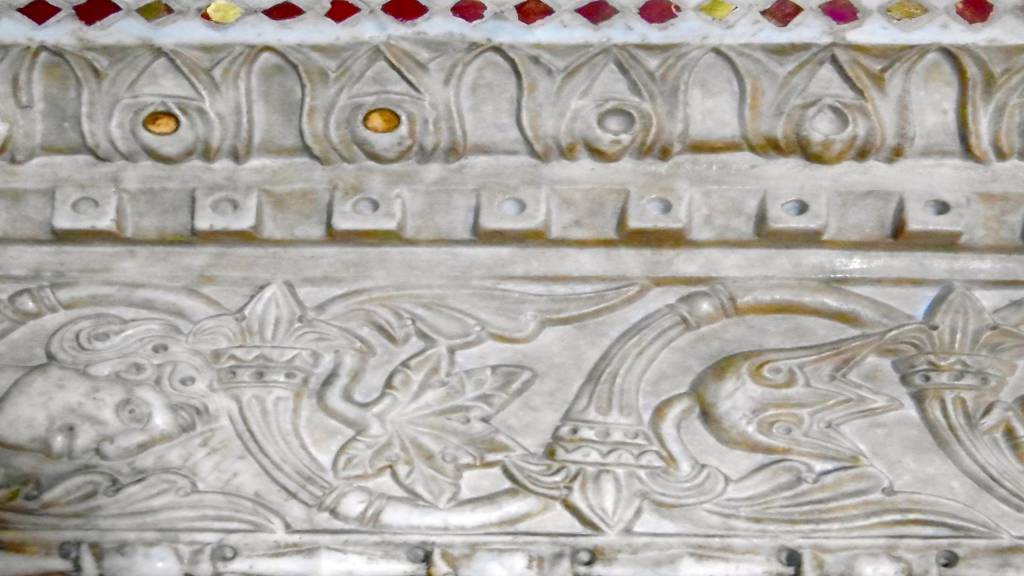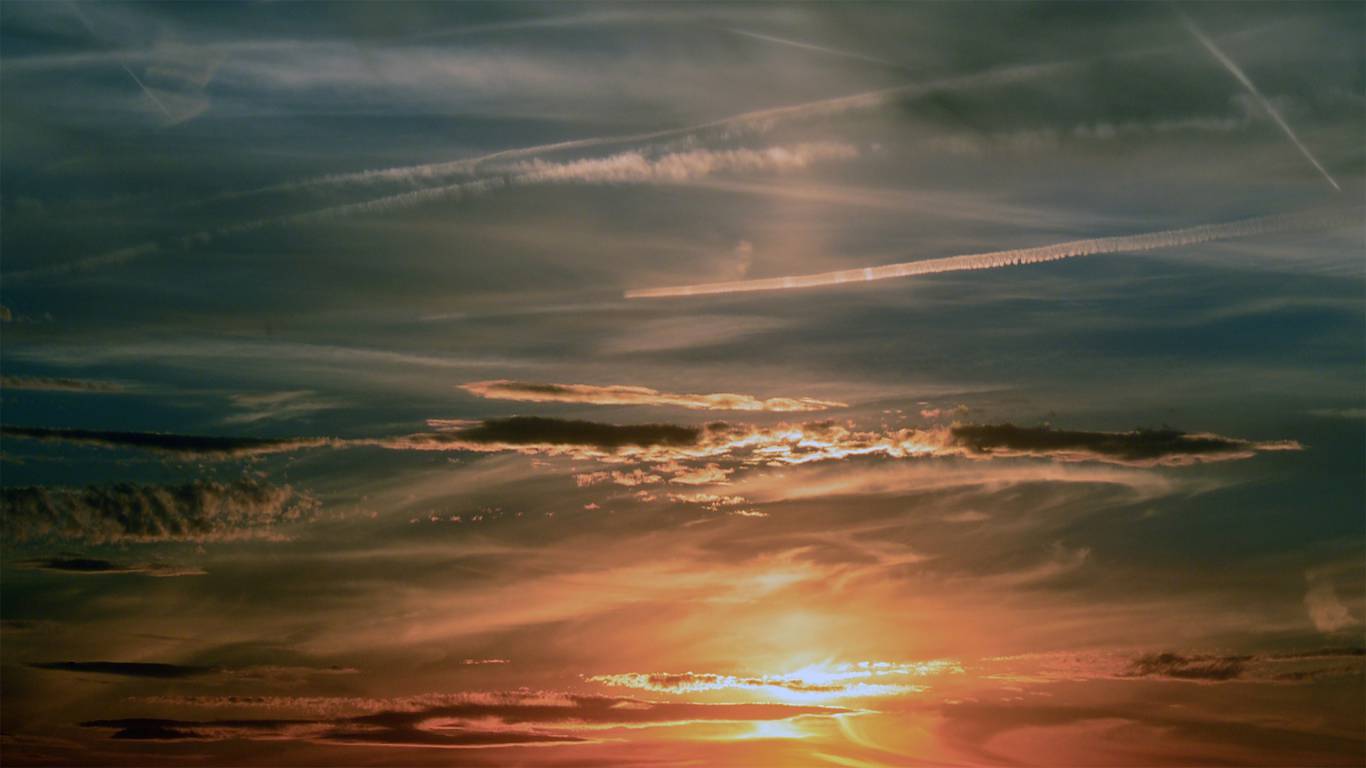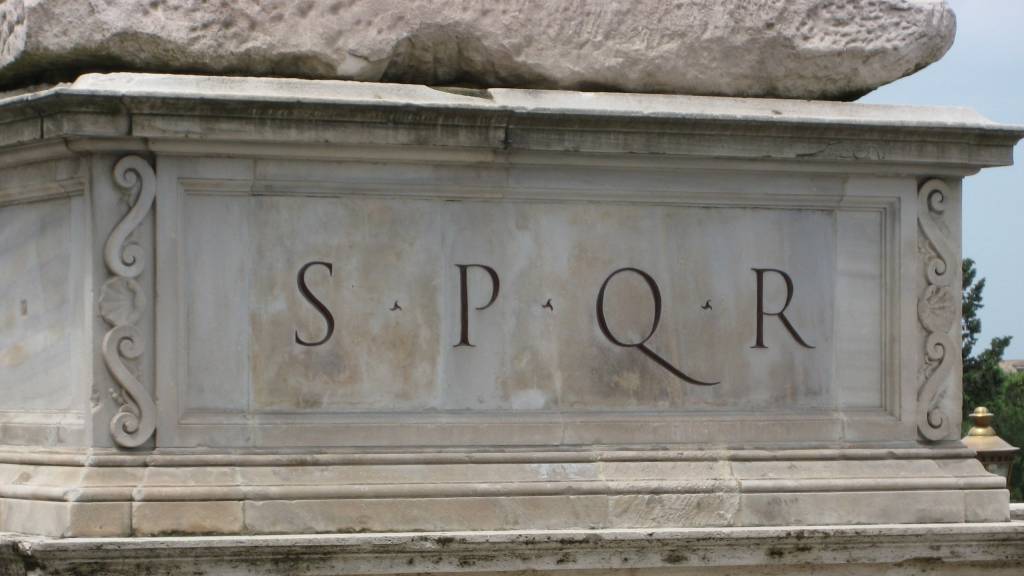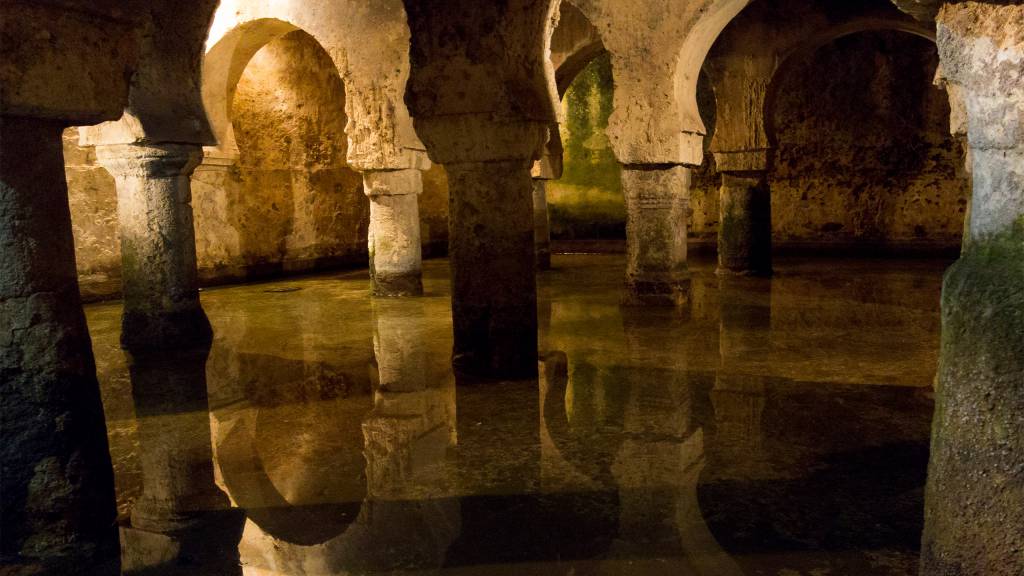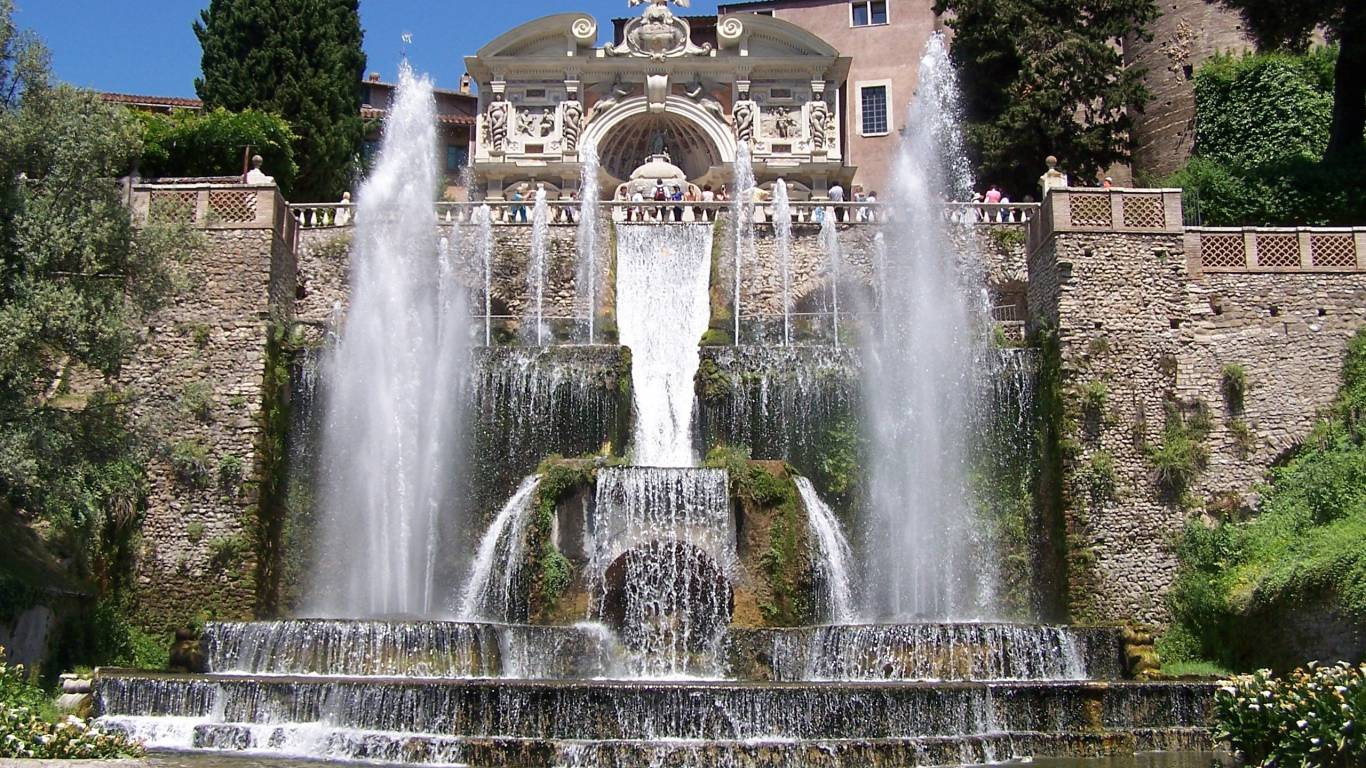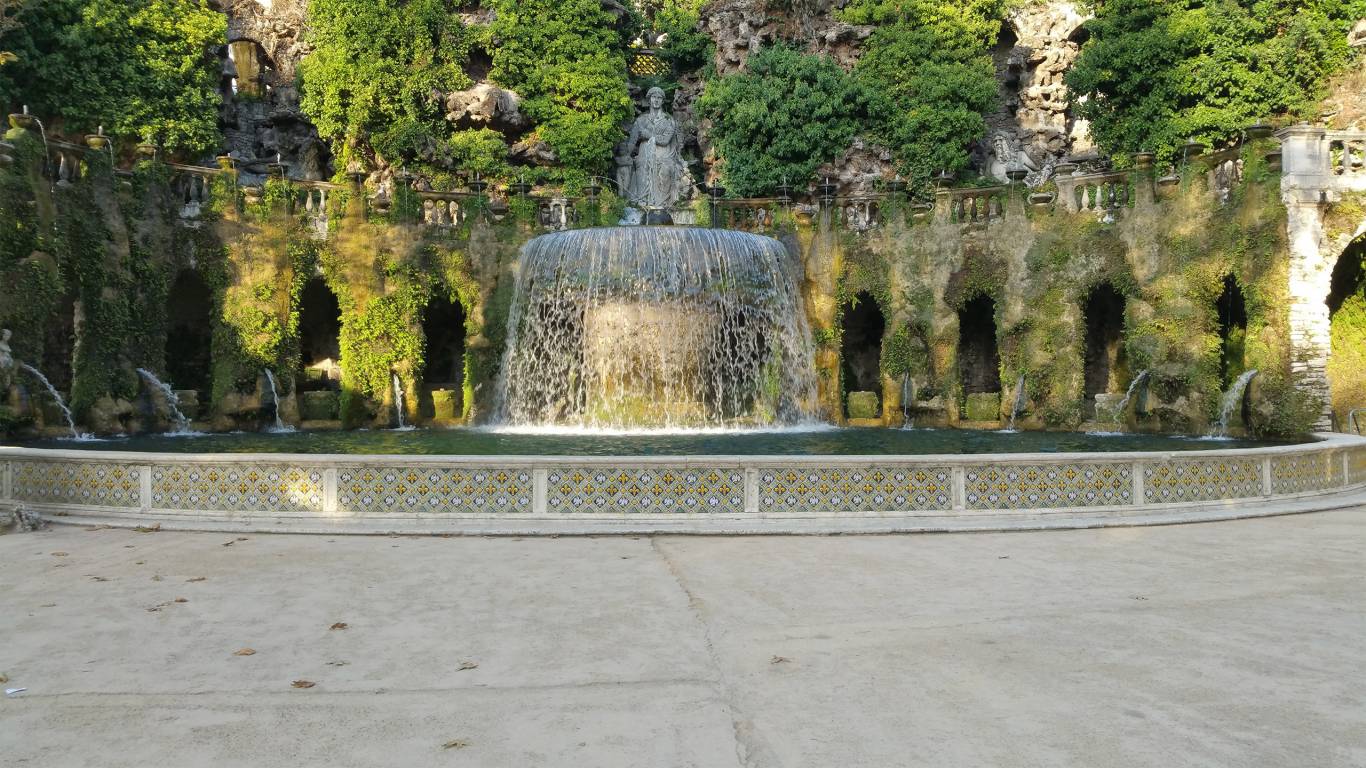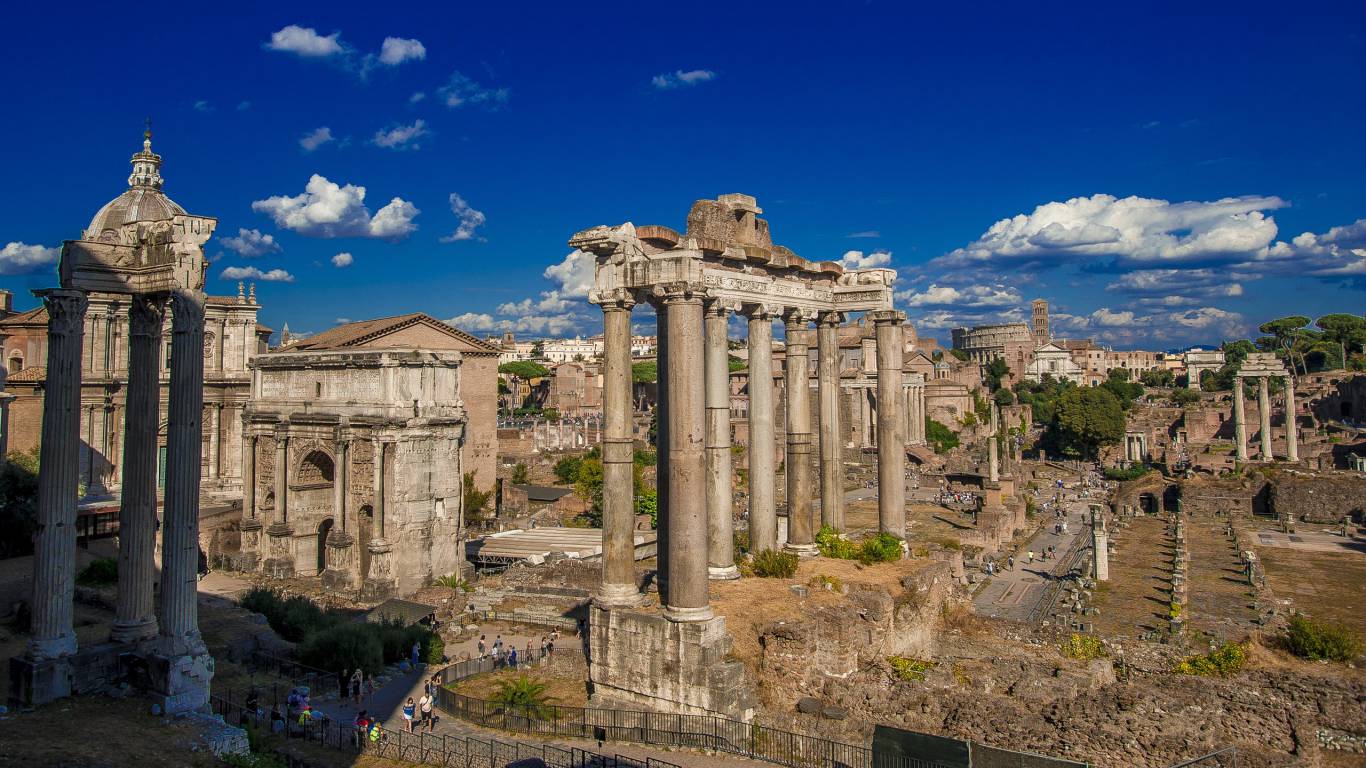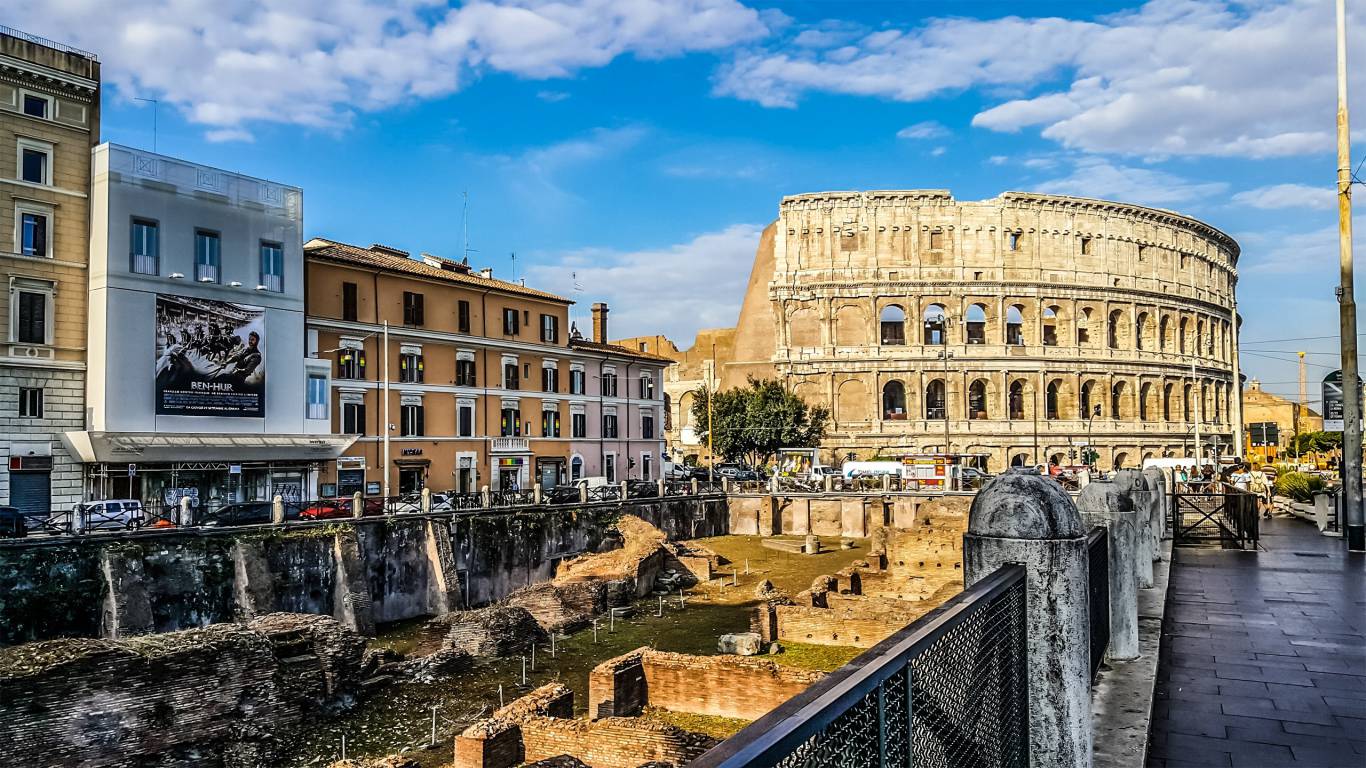Around us
Hotel Colonna Frascati
Frascati: the Town
Already mentioned in 9th-century documents as a "little town" (Liber Pontificialis), the origin of Frascati dates back to 1191, when, after the destruction of "Tusculum" (Tusculum was a pre-roman, roman, and medieval town, where, even now , one can admire the archaeological excavations, and the many roman constructions, like the amphitheatre and Lucullus' villa), the dioceses passed from Tusculum to Frascati. The name of Frascati (originally "Frascata") probably derives from the use "frasche" (branches) to build makeshift houses, maybe after the destruction of Tusculum.
Always the favourite destination of the Roman Aristocracy (many popes built here their palaces and summer residences, leaving us that wonderful legacy that are the Ville Tuscolane), Frascati and the Roman Castles area are still today the perfect place chosen by the roman to spend their holidays, also attended for "picnics" and outings. Of great historic and artistic interest, the Church of the Gesù, consecrated in 1773, houses the famous "fake cupola", created by Andrea Pozzo (1642-1709). Of Saint Peter's Cathedral, inaugurated in 1636, bombed during the Second World War, and rebuilt at a later time, only the original façade remains. Very suggestive is the "Matone", a historic area of Frascati, that remained intact like in the past centuries, since it was not touched by bombs, and where, even now, it is possible to admire the old fountains, and the old wooden front doors of the taverns.
From the gardens of Villa Aldobrandini one can enjoy a breath-taking view of Rome, and visit what is perhaps the most beautiful place in Frascati: the Nympheum of Villa Aldrobrandini.
http://www.comune.frascati.rm.it/
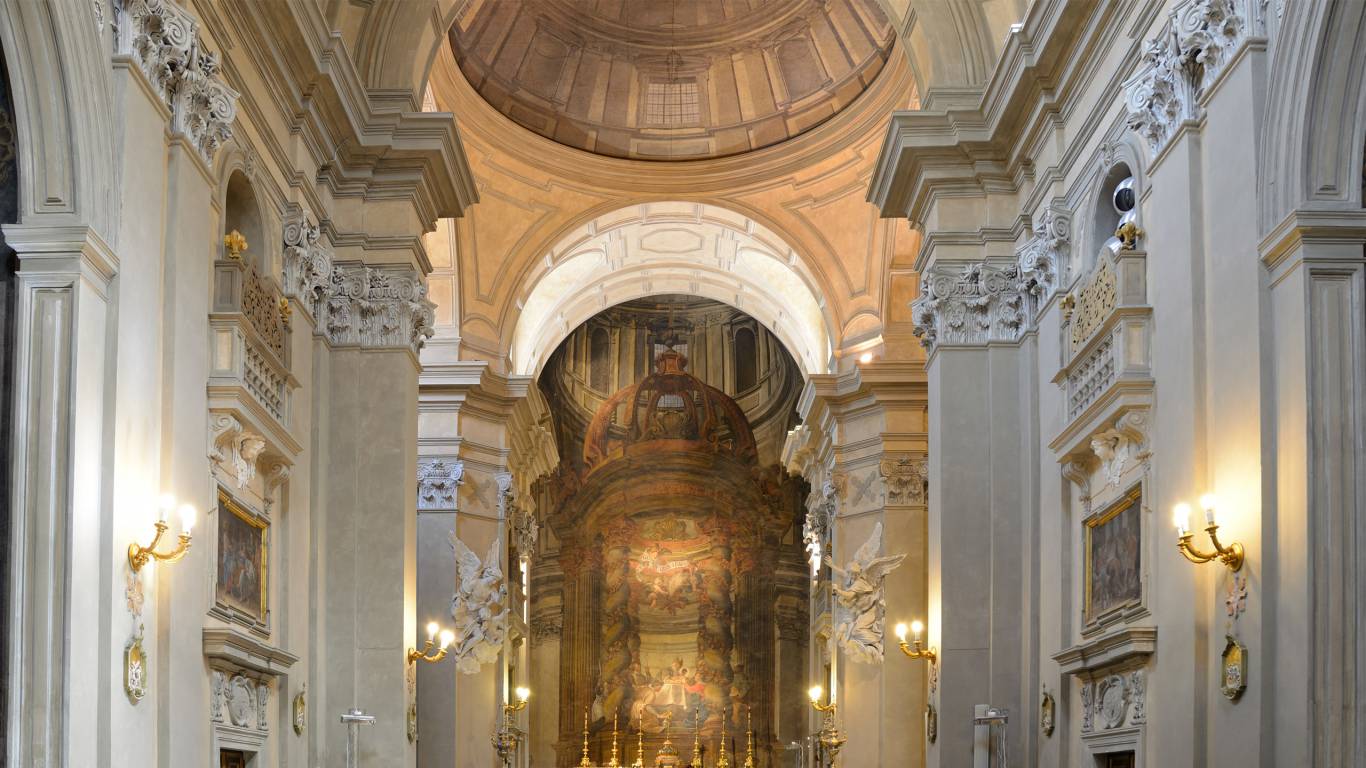
Frascati: places and monuments
La Chiesa del Gesù (The Church of the Gesù)
The term "trompe-l'œil" derives from french, and literally means: "it cheats the eye". It is used to refer to paintings that, though flat, give the spectator the observer the illusion of the third dimension. Sometimes very realistic, the "trompe-l'œil" technique very often uses the laws of perspective. For this reason, typically the illusion is perceived only if the work is observed from a certain position. In the historical center of Frascati, inside the Church of the Gesù, a few meters from our hotel, there is a splendid example of "trompe-l'œil". It is the so called "fake cupola": a round canvas, hung on the roof of the church, that portraits a cupola the way it would appear if looked at from inside. The author is said to be Father Andrea Pozzo (1642-1709), that painted a similar cupola in the Sant'Ignazio Chruch in Rome. The Church of the Gesù is called like that because of the Jesuits. In 1560 the Society of Jesus took possession of an older church, of smaller dimensions, that was located in the same place, dedicated to the Blessed Mary, with the intention of expanding it. The works of expansion (and restoring) took many years, and were interrupted many times, involving the most famous architects, like Carlo Fontana. The church, as we know it today, was consecrated in 1773, by Cardinal Bishop Enrico Stuart.
Villa Aldobrandini
Villa Aldobrandini, perhaps the most beautiful and famous villa in Frascati, has been property of the Aldobrandini family for many centuries, and is still the private residence of Prince Aldobrandini. From the gardens of Villa Aldrobrandini (accessible to the public) one can enjoy a breath-taking view of Rome, and visit what is perhaps the most beautiful and suggestive place in Frascati: the Nympheum of Villa Aldrobrandini. For reservations or info directly contact the hotel.
For reservations or info visit http://www.aldobrandini.it/sito/villa/piantine.shtml , or directly contact the hotel.
Villa Falconieri
During the Second World War, a little part of Villa Falconieri, originally Villa Rufina, was bombed. These areas were restored in 1959. Very suggestive, and of great historical and artistic importance, are the rooms of four seasons. When you enter the room of Spring, you are astonished by its extreme beauty. From 2000 to 2015 it was the headquarters of INVALSI (Istituto Nazionale per la Valutazione del Sistema d'Istruzione formazione - National Institute for the Educational Evaluation of Instruction and Training), and became in 2016 the headquarters of Accademia Vivarium Novum, where classical languages are taught, and where people usually speak only in latin, and sometimes in ancient greek. It is possible to visit the villa inside, but a reservation is necessary. For reservations or info directly contact the hotel.
For reservations or info, visit https://vivariumnovum.net/en , or directly contact the hotel.
Villa Mondragone
Property of Cardinal Ugo Boncompagni, alias Pope Gregory the 13th, in Villa Mondragone the papal bull "inter gravissimas" was written, that led to the reform of the calendar, and the introduction of the Gregorian Calendar, that is the one that we still use today. The coat of arms of Pope Gregory, a dragon, that appears in many areas of the villa, is what gave the villa its name. Since 1981 the building is property of the University of Tor Vergata, and is used now as a convention center. It is possible to visit the villa inside, but a reservation is necessary. For reservation or info directly contact the hotel.
For reservation or info visit http://www.villamondragone.it/ , or directly contact the hotel.
Museum and Convention Center Aldobrandini Stables
The Aldobrandini Stables were originally conceived as a building separate from the villa of the same name but attached to it. The stables has been restored by the architect Massimilano Fuksas, and a wide multifunctional area was realized, to host both a splendid permanent archaeological exhibition, and a series of extremely diversified events, including art exhibits, musical festivals, poetry readings, thanks the presence of laboratories, and an auditorium. We mention the presence inside the museum of the urns with epigraphs of the Rabirii family of the 4th-3rd century B.C., and of a colossal statue of Aphrodite dated 50 B.C. TEL. +39069417195-6 VISIT SCHEDULE: 10.00-18.00 (MONDAY CLOSED) SATURDAY AND HOLIDAYS: 10.00-19.00
http://www.scuderiealdobrandini.com/
"In Frascati the coldest object… in the entire Universe: the Nautilus."
At the LNF (Laboratori Nazionali di Frascati - National Laboratories of Frascati) of the INFN (Istituto Nazionale di Fisica Nucleare - National Institute of Nuclear Physics) is located what is, probably, the coldest object… in the entire universe. In order to reveal and measure gravitational waves, the scientists of the INFN have built a device called Nautilus, that, in order to work properly, must be at 0.1 Kelvin (-272,15 °C). Temperatures so low cannot be find elsewhere on the Earth and in the known universe, where the lowest temperature is 3 Kelvin (- 270,15 °C). Therefore, unless we suppose the existence of an alien civilization that, provided with a technology similar to ours, succeeded in building devices inside which temperatures are so low, the Nautilus is, perhaps, as far as we know, the coldest object in the entire universe.
Research centers and institutions
Frascati is not only import from the point of view of tourism, but also for the presence of research many centers and institutions. Here in Frascati you will find the INFN (Istituto Nazionale di Fisica Nucleare - National Institute of Nuclear Physics), ESA (European Space Agency), ESRIN (European Space Research Institute), Accademia Vivarium Novum located in Villa Falconieri (once headquarters of INVALSI) for the teaching of classical languages, and Villa Mondragone (now property of the University of Tor Vergata, and a convention center). Very easy to reach from our hotel are the CNR (Consiglio Nazionale delle Ricerche - National Research Council), and the "Donato Menichella" center of the Bank of Italy (located in Vermicino), the PTV (Policlinico Tor Vergata - Tor Vergata Polyclinic), and the University of Tor Vergata. Closeby you can find also INAF (Istituto Nazionale di Astrofisica - National Institute of Astrophysics) in Monte Porzio Catone, and INGV (Istituto Nazionale di Geologia e Vulcanologia - National Institute of Geology and Volcanology) in Rocca di Papa.
Surroundings
MONTE PORZIO CATONE (4,0 km)
Immersed in the extraordinary scenery of the Roman Castles area, Monte Porzio Catone is important for the International Exhibition of Presepi (nativity scenes), that takes place every year, from the 8th of December to January. Also very interesting is the Intercontinental Exhibition of Orchids, that takes place every year in Aprile.
http://www.comune.monteporziocatone.rm.it
Museo Diffuso del Vino (Monte Porzio Catone Wine Museum)
Located in Monte Porzio Catone, splendid little town near Frascati, run by the "Manacubba" Cultural Association, we can find the "Museo Diffuso del Vino": and eco-museum dedicated to wine. The "Manacubba" Cultural Association declares in its statute that its purpose is the "…development and the protection of the historical and artistic heritage, in opposition to a model of a consumer and superficial relationship with the territory…" The wine museum has many tools and objects related to the production of wine, the growing of grapevine, grape harvest, the actual production of wine, and the bottling. Since 2013 the museum also provided itself with QR code technology, and with a wi-fi connection, with which every visitor, with the aid of his mobile phone, is able to reach a huge archive of videos and detailed information, generated by the "Travaso di Cultura" project. The visit in the museum concludes in the "tasting room", where it is possible to try some types of wine, and where it's possible to know something more about the types of wine of this territory. For reservations or info visit directly contact the hotel.
For reservations or info visit http://www.monteporziocatonemusei.it/?page_id=34 , or directly contact the hotel.
Barco Borghese
A very interesting roman archaeological site, the "barco borghese" consists in a wide rectangular area, that was used by the Altemps, since 1567, as a hunting lodge. In fact, "barco" means "animal enclosure". In 1963 the Borghese family changed it into a "giardino all'italiana". Thanks to a laborious restoration, now it is possible to admire its many important archaeological artifacts, and a suggestive underground itinerary. For reservations or info directly contact the hotel.
For reservations or info, visit http://www.monteporziocatonemusei.it/ , or directly contact the hotel.
Exhibition of Presepi (nativity scenes) and Dioramas
Organized by the "Amici del Presepe" group, and by the Confraternity of the Blessed Sacrament, and sponsored by the Municipality of Monte Porzio Catone, and the "Amici del Presepe" Italian Association, every year, from November the 15th to January the 6th, the "Exhibition of Presepi and Dioramas" takes place. The Exhibition takes place in the streets of the historical center, in antique buildings, to present all the works divided into different sections. Among the works made in the last years, we mention the reproduction of Saint Peter's square, in 2000, for the Jubilee, the reproduction of Roma Sparita of 1800, and the unforgettable view of Monte Porzio Catone, including the hermitage of Calmadoli in 2002, and Villa Mondragone in 2005. For reservations or info directly contact the hotel.
For reservations or info visit http://www.presepitalia.it/ , or directly contact the hotel.
ROCCA DI PAPA (7.0 km)
Located on the top of one of the highest mountains of the "Alban Hills", Rocca di Papa offers the visitor an incomparable view. From the medieval rock, during sunset, you can admire a breath-taking view of the territory surrounding the Roman Castles.
CASTEL GANDOLFO (10,0 km)
Castel Gandolfo offers a breath-taking view of Lake Albano. The lake, that originated from a volcano, is surrounded by a luxuriant wood, that sport lovers like to cover on foot or by bicycle. (Its perimeter is 10 km long.) Here one can admire many ducks, swans, and geese. Castel Gandolfo has always been the summer residence of the popes, and this tradition was interrupted only by Pope Francis, that, on the other hand, made accessible to the public the natural beauties, and the archaeological heritage, of one of the most important, and "secret", gardens in Italy, that had been forbidden to the visitors for more than 500 years: the papal private gardens of Castel Gandolfo, with the relative palace. This way, one can visit the rooms where the popes used to stay in summer.
http://biglietteriamusei.vatican.va/musei/tickets/do?action=booking&codiceLivelloVisita=33&step=1
The "secret" gardens and the Papal Palce of Castel Gandolfo
The Papal villas of Castel Gandolfo are located in an area about 55 hectares wide. This area was granted to the Papal States with the Lateran Treaty in 1929, and represent the suburban residence attended by the popes, since the time of Urban the 8th, in the 17th century. The Barberini Garden offers a scenery of exceptional beauty, composed by the Garden of Magnolias, and the Avenue of Roses, the Avenue Herbs, the Avenue of Ilex, and the Belvedere. This attraction had been forbidden to the public for more than 500 years, and now the "secret" gardens of Castel Gandolfo can be visited again. The visits at the gardens and the palace of can be reserved directly contacting our hotel.
The visits at the gardens and the palace of can be reserved directly through the site of the Vatican Museums https://biglietteriamusei.vatican.va/musei/tickets with some difficulties, or directly contacting our hotel.
Legio XXX Ulpia Traiana Victrix
If you want to live again the atmosphere of the Rome of the Empire, and the taste of the life in the camp, and experience the clanking of the armours hitting each other, Legio XXX is the experience that you want to try. Legio XXX Ulpia Traiana Victrix is an ONLUS association, that works in the field of "historical reconstructions and experimental archaeology": based on a deep scientific research, the life of the roman "castra", their habits, their equipment are very accurately reproduced. Great care is given to the reproduction of the roman army, and of its military manoeuvres: the army becomes today a precious instrument to know the habits and the technological and scientific level of this civilization. It is also through a series of events and meetings that Legio XXX attempts to spread the knowledge of the most important aspects of the Roman Empire, in the period of its maximum splendour (2nd century). Furthermore, it is with enormous dedication that the members of this association reproduce, by hands, tools, machines, and barracks with means similar to those used in Ancient Times, with the idea of being faithful to the ideals of a scientific research as accurate as possible. The events, for those who want to participate, keep a recreational attitude, and are very interesting to attend. The camp of the Legio is in Via Model di Castel Gandolfo, 2 (km 23,300 s.s. Appia) - Castel Gandolfo (RM), at a few kilometres from our Hotel, and can be reached from it very easily and rapidly; here the Legio practices and builds their tools. For reservation or info directly contact the hotel.
For reservation or info visit the web-site http://www.legioxxx.com/, or directly contact the hotel. Fb page https://www.facebook.com/groups/Legio.trigesima/.
GROTTAFERRATA (3,0 km)
Located only 3 kilometers from Frascati, in Grottaferrata you can visit Saint Nilus' Abbey. Founded in 1004, in honor of the Saint of the same name, it is the only greek-rite abbey in central-northern Italy. Also very interesting is the Fiera Nazionale di Grottaferrata (National Fair of Grottaferrata), that takes place every year in March.
http://www.fieradigrottaferrata.it
Saint Nilus' Abbey
Founded in 1004 by the saint to whom it is dedicated, Saint Nilus' Abbey is the only "greek-byzantine-rite" abbey in north-central italy. The "greek-byzantine" rite differs from the traditional rite, which probably we are all more accustomed to, for certain riituals and gestures, like the sung mass in greek. The crypt of the abbey, provided with a window with a grating, around which, historically, the entire abbey developed, is what gave Grottaferrata its name. In fact, Grottaferrata derives from the latin expression "crypta ferrata" (literally "crypt protected by iron").
For reservations or info visit http://www.abbaziagreca.it/en/art/crypta.asp , or directly contact the hotel.
Laboratory for the Restoration of Ancient Books and Manuscripts
The Abbey of Grottaferrata is the headquarters of the "Laboratory for the Restoration of Ancient Books and Manuscripts". Among the many activities carried out, we mention that related to the flood of Florence in 1966, that made possible to save more than one thousand volumes, and the restoration of more than one thousand pages of the Codex Atlanticus written by Leonardo Da Vinci.
The Cryptoporticus
The cryptoporticus, of the 1st century B.C., perfectly preserved, consists in a part of the buildings that formed an ancient roman villa: a long porch, both a support and a coverage, offers to the viewer, with its arches, a breath-taking view of the valley below.
ALBANO (14 km)
Located not far from Frascati, there is another splendid little town: Albano. Immersed in the extraordinary landscape of the Roman Castles, the name of this little town probably derives from the adjective "albus" (white), the colour that the lake of the same name (Lake Albano) must have had in roman ages.
"I Cisternoni di Albano" - the Cisterns of Albano
Very interesting from a touristic point of view, Albano is also important for the presence of an important attraction, both from the point of view of history and architecture: the Cisterns of Albano. Built in Roman Age, the Cistern of Albano are nothing but a giant tank (or cistern), capable of containing more than ten thousand litres of water. Surprisingly, it is still working. Of rectangular shape, its sides are about 45 meters and 30 meters long, and the Cistern is about one thousand four hundred meters wide. Inside36 pillars have been erected, that form 5 big naves. The supply of water is guaranteed by 2 aqueducts: the oldest one, the one said of the "one hundred mouths", lead into the centre of the cistern, and the other one, the most recent one, led into the first nave. The cistern was realized through both masonry and digging the stone. The walls of the cistern are all covered with a waterproof plaster: opus signum.
Legio Secunda Parthica Museum
It's a separate section of the Museum of Albano, born because of the existence, in the same place, of the Legio Albana, guard of the emperors Septimius Severus and Maxentius (202 A.D. - 312 A.D.), the only one to have a permanent camp in Italy, on which ruins Albano Laziale was born. Inside you will find a very refined reproduction of wepons, tools and clothings of the roman soldiers, with a complete description of the camp and of its activities. Even today the Legio Secunda Parthica Severiana still exists, a group involved in historical re-enactments and experimental archaeology, that cooperates with museums, schools, institutions, and spreads the knowledge of its history, and participates in historical events. This legion trains every Saturday afternoon in the Amphitheatre in Albano. For information about the timetable of the visits at the museum and events concerning the historic re-enactments of the group, contact the Hotel Colonna (Tel.: 06.94018088 – E-mail: hotelcolonna@hotelcolonna.it ), and ask to speak to Giulio (marketing manager ).
ARICCIA (15,0 km)
By tradition, the birthplace of porchetta, Ariccia is also important for the presence of Chigi Palace. Known to the public for being the place where the motion picture “Il Gattopardo" (“The Leopard") was shot, a 1963 film directed by Luchino Visconti, and starring Bart Lancaster and Alain Delon). Also very interesting is the “gravity hill" of Ariccia, where objects roll uphill, instead of going downhill, and that always attracts many tourists.
https://www.palazzochigiariccia.com/
Gravity hill of Ariccia: where objects roll uphill, instead of downhill
During the "EVA" (Extra-Vehicular Activity) of the Apollo 16, the astronauts John Young and Charlie Duke bumped into what (at first) seamed a strange rock, of an irregular shape, located (it seamed so) not far from their position. Interested, they astronauts decided to get closer, to observe it. Walking through the many lunar craters, the two astronauts appear, in the old movies, becoming smaller and smaller, in contrast with the image of the rock that always remains of the same dimensions. They would never reach it... What, at first, seemd like a simple rock, of modest dimensions, turned out to be a real "boulder", more than ten meters high, known today as "house rock". The fact that our sight can be cheated is not something new. Our eyes do not behave like "cameras". On the contrary, our sight evolved, in million of years, in order to work in an environment, like the Earth, with precise properties. For example, on the Earth there is air, and objects from the observer do not appear as clear as bjects that are closer. Furthermore, the more distant objects usually tend to appear more with blue and gray tones, as a result of that phenomenon known as "Rayleigh effect". (In fact, it is the same principle, used by painters, and discovered in the Reneissance, to give the illusion of distance, known as "aerial perspective".) If you are interested in this kind of things, you should visit the "gravity hill of Ariccia": famous street, that links Ariccia and Rocca di Papa together, where objects seam to roll uphill, instead of downhill. This place is very well known, also as a result of the studies carried out by CICAP (Comitato Italiano per il Controllo delle Affermazioni sul Paranormale - Italian Committee for the Investigation of Claims of the Paranormal), and thanks to the famous TV program "SuperQuark" (hosted by the famous italian scientific journalist Piero Angela), that that wanted to explain the origins of this strange place. In fact, the inhabitants could not help being tempted to lookfor the most unlikely explenations for this type of phenomenon: not proved inversion of the magnetic poles (maybe as a result of the volcanic nature of the soil), forces of mysterious nature, ecc. In reality, things are different: what looks like a hill is actually a slope, and the surrounding vegetation, together with the presence of two steep streets, before and after the segment in object, lead to a distorted vision of the vertical axis. The phenomenon of the "gravity hill of Ariccia" is a lot of fun, and actracts all the time a big number of tourists and curious people. But if you decide to go, be very carefull! There is always a lot of traffic.
GENZANO (19,0 km)
Fully immersed in the tradition of the Roman Castles area, the little town of Genzano is known all over the world for the Infiorata, a religious event that takes place in Grottaferrata on day of Corpus Domini.
http://www.comune.genzanodiroma.roma.it/default.aspx
NEMI (14,0 km)
Nemi really deserves its nickname of “bomboniera" (“bomboniere"), since it's so little and pretty. With a breathtaking view of the lake of the same name (Lake Nemi), Nemi is also known for the production of its delicious wild strawberries, and for the Strawberriy Festival, that takes place in Nemi every year.
http://www.comunedinemi.rm.gov.it
The Museum of The Roman Ships in Nemi
The real name of Emperor Caligula (12 A.D. - 41 A.D.) was Gaius Julius Caesar Augustus Germanicus. His "cognomen" Caligula was given to him for his habit of wearing "caligae" (a particular type of sandals), that back then were used by the roman legions. Very little is known about him. Not reliable seem the rumors about his insanity. Disregarded by the senate, and stricken by adversities, he died very young, aged 28, assassinated by the praetorian guard. When he was alive, he order the construction of two giant ships, masterpieces of engineering, 70 meters long and 25 meters wide, that, located in Lake Nemi, were used as floating palaces. When the emperor died, in order to erase their memory, the two ships were sunk. However, the memory was kept alive, at least as a legend. Accidental recoveries of artifacts dated back to the Imperial Age took place at least since late Antiquity. Recovery attempts were made since the 15th century. Many were the methods used: rafts, boats, diving bells, etc., that made possible to recover many samples. At last, the actual recovery took place between 1928 and 1932, carried out by Guido Ucelli, using pumps that dried out the lake completely. The two ships were found almost intact, and were finally attributed to Emperor Caligula, thanks to an inscription found on a bronze tube, still visible, that says: "CAESARIS AUG GERMANICI". A fire that took place from the 31st of May to the 1st of June 1944, destroyed the two ships completely, together with many other finds. Though never ascertained, rumor has it that the fire was intentionally started by the German army, with the intention of recovering the bronze parts, for military purposes. Today in the Museum of the Roman Ships in Nemi (meanwhile built in order to contain them) only a few artifacts remain. Large sections of the museum are now used for temporary exhibitions, about all kinds of subjects.
TIVOLI (25,0 km)
Only 35 minutes' drive from Frascati, Tivoli represents a place of great historical and artistic importance. Villa Adriana (very important historically), Villa d'Este (with its “one hundred fountains"), and Villa Greogoriana (immersed in an extraordinary scenery) are very important places to visit, for someone who decides to stay in Frascati for longer periods.
http://www.comune.tivoli.rm.it/home_turismo
ROMA (10,0 km)
Rome, the Eternal City, is the perfect place to visit. Its ancient history is accurately proved by the many monuments and artifacts that, in every street and in every alley, have always something new to teach and be admired. Thanks to its strategic position, Frascati is only 20 km far from the Capital of italy, and also thanks to the oldest railway link of the Papal States, the Frascati-Rome Termini line, one can easly access, by train, once every hour, the Central Station or Rome Termini, in only 25 minutes.
http://www.turismoroma.it/


